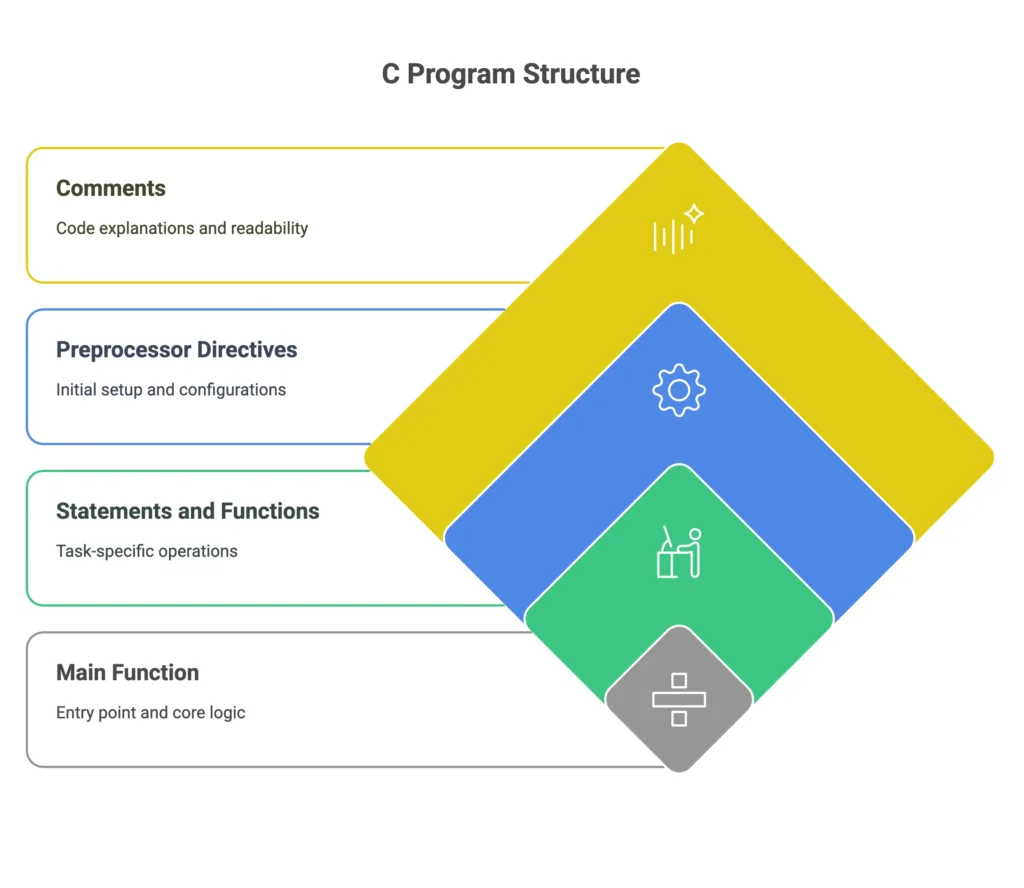Structure of a C Program
Let's break down the structure of a C program from basic to advanced in easy-to-understand language
Basic Structure

Preprocessor Directives
These lines start with a hash symbol # and are processed before the actual compilation of code. They typically include header files using #include directive.
#include <stdio.h>
Main Function
Every C program must have a main() function where execution starts.
int main() {
// Code goes here
return 0;
}
Intermediate Structure
Variable Declaration
This is where you declare variables that store data. It’s good practice to declare variables at the beginning of the main() function.
int main() {
int age;
float height;
// Rest of the code
return 0;
}
Executable Statements
These are statements that perform actions. They can include assignments, function calls, loops, conditionals, etc.
int main() {
int age;
float height;
printf("Enter your age: ");
scanf("%d", &age);
printf("Enter your height: ");
scanf("%f", &height);
// Rest of the code
return 0;
}
Advanced Structure
Functions
Besides main(), you can define your own functions to perform specific tasks. Functions improve code readability and reusability.
// Function to calculate the area of a rectangle
float calculateArea(float length, float width) {
return length * width;
}
int main() {
// Code
float area = calculateArea(5.0, 3.0);
// Rest of the code
return 0;
}
Header Files and Libraries
You can create your own header files to declare functions and structures. Additionally, you can link external libraries for more functionality.
#include "myfunctions.h" // Custom header file
#include <math.h> // Standard library for math functions
int main() {
// Code
float result = sqrt(25.0); // Using sqrt() from math.h
// Rest of the code
return 0;
}
Understanding the structure of a C program is essential for writing clean, readable, and maintainable code. By following a clear structure, you can organize your code logically, making it easier to debug and modify. Remember to practice writing programs regularly to reinforce these concepts. Happy coding! ❤️
